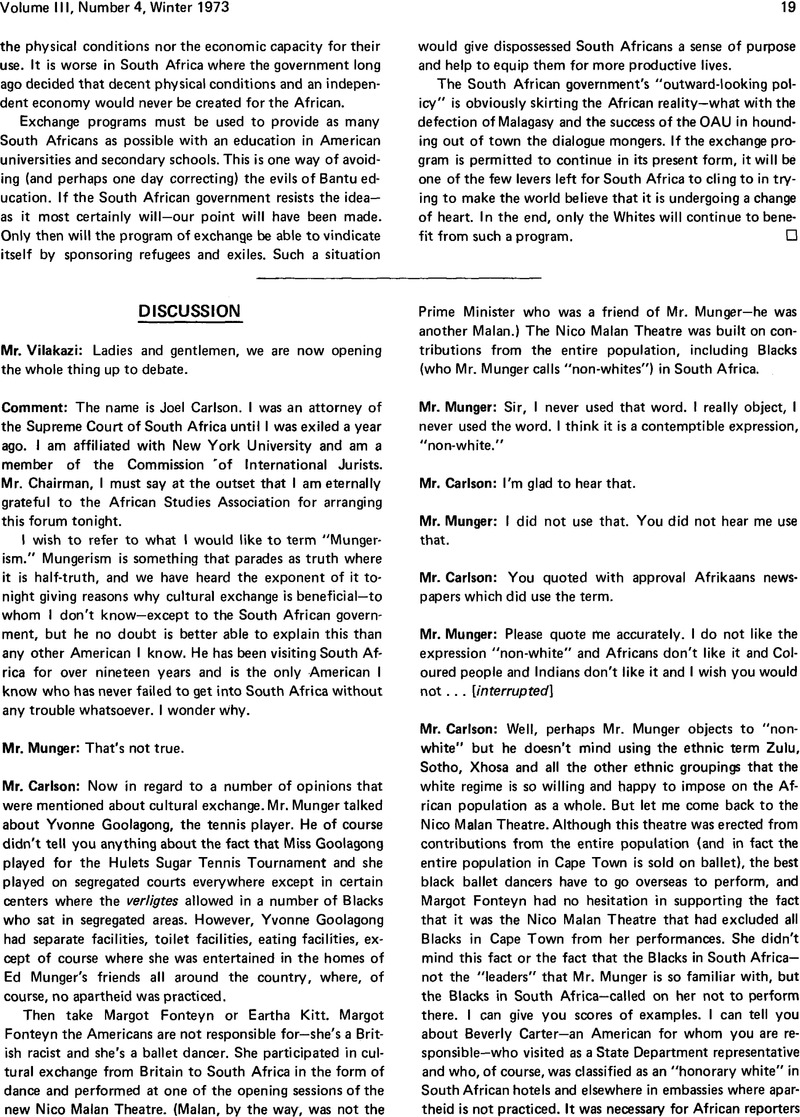No CrossRef data available.
Published online by Cambridge University Press: 23 May 2019

page 20 note * At the symposium my answers were perforce off the cuff. I have since inquired about the financial support of USSALEP. It is correct that the Ford Foundation is the single largest supporter since USSALEP's formation in 1958 and that the Rockefeller Brothers Fund is second. American corporations have contributed 4 percent of the funds since the exchange program was founded. The Ford Motor Company has made small contributions in the past.—E.M.
page 21 note * In September 1973, the Minister of Defence, P. W. Botha, attacked USSALEP in a speech at Oudtshoorn which drew front page headlines throughout South Africa. He charged that members of the USSALEP Board (Professor Munger, Martha Wallace, Executive Director of the Luce Foundation, Alan Pifer, President of the Carnegie Corporation, and three others) were also members of the Council on Foreign Relations. The Minister said that the Council was promoting world socialism and communism and that, intentionally or unintentionally, the USSALEP members were doing the same. He called upon all Nationalists to refrain from any relations with USSALEP.
page 23 note * Subsequently, in August 1973, the United States-South Africa Leader Exchange Program held a week-long symposium at Umhlanga Rocks on the Indian Ocean in Natal. The subject was African Wages and Productivity, but discussion ranged very widely over economic, political, and social topics. There was absolutely no discrimination at the resort hotel. It was attended by a large number of prominent black and white Americans, a large number of English- and Afrikaans-speaking white South Africans, Asian and Coloured leaders, and many black South Africans. These included representatives of urban Africans, such as businessmen, bankers, psychologists, teachers, the three leading Bantustan leaders, etc. Trade unions were strongly represented by African, Coloured, Afrikaner, and English leaders. The South African leaders present—led by the Afrikaners and Africans—later decided that the exchange of views had been so valuable that they would meet again within some months without the presence of the Americans.